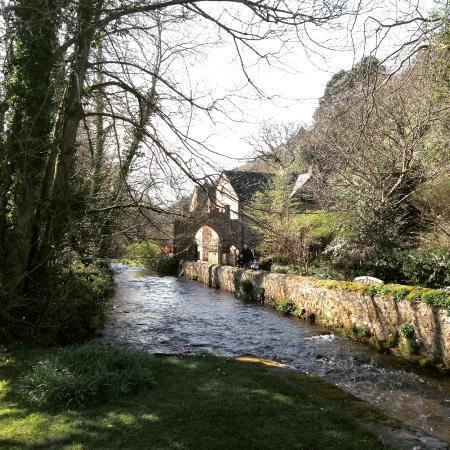Opened 1782 Construction started 1779 | Completed 1782 | |
 | ||
Similar Dunster Castle, Yarn Market - Dunster, Dunster Museum & Doll Colle, Gallox Bridge - Dunster, Priory Church of St Georg | ||
Dunster Working Watermill (also known as Castle Mill) is a restored 18th century watermill, situated on the River Avill, close to Gallox Bridge, in the grounds of Dunster Castle in Dunster, Somerset, England. It is a Grade II* listed building.
Contents
- Map of Dunster Working Water Mill Mill Ln Dunster Minehead TA24 6SW UK
- History
- Architecture and machinery
- References
Map of Dunster Working Water Mill, Mill Ln, Dunster, Minehead TA24 6SW, UK
The mill stands on a site where a mill was first recorded in the Domesday Book, but the present building was constructed around 1780. It closed in 1962 but was restored in 1979 and is still used to grind flour. The equipment is powered by two overshot wheels. It is owned by the National Trust but operated as a tourist attraction by a private company.
History
At the time of the Domesday Book in 1086 there were two mills in Dunster. One which was called the Lower Mill was on the site of the present mill. In the 17th century there were both malt and oats mills but by 1721 one of these had been converted to a fulling mill. The present mill, which was built around 1780 and replaced the two former mills. In 1940 a bakery was added. The mill ground corn until World War II and then animal feed until it closed in 1962.
It was restored to working order in 1979, winning a conservation award in 1982. The mill is still used to grind wheat flour. A cafe was opened in the buildings which used to be the wagon house and stables. Further restoration work, completed in 2007, was funded by the Exmoor Sustainable Development Fund.
Although it is owned by the National Trust it is leased to a private company to run as a tourist attraction and an entrance charge applies to all visitors. The site is visited by around 10,000 tourists a year and produces 6–8 tonnes of flour each year. The second waterwheel was restored and the collapsed wheel replaced in 2015.
Architecture and machinery
The two storey building has a slate roof. To the south east a stone wall contains wrought iron gates in an arched gateway.
The grinding equipment is powered by a pair of overshot wheels, which transfer power to the crown wheel via a series of belts. This then drives the grinding stones and sack lift. There is a doorway on the first floor to allow material to be hoisted up the building.
An adapted winnowing machine is used to sift the flour produced by the millstones.
